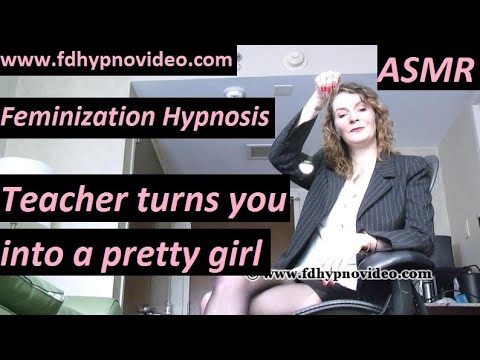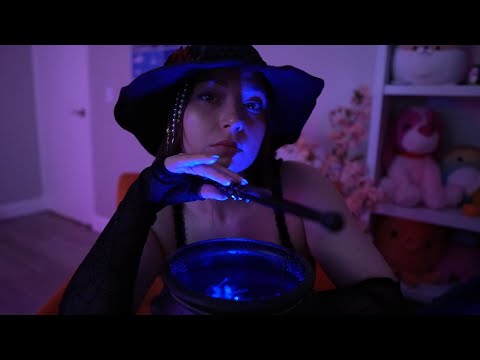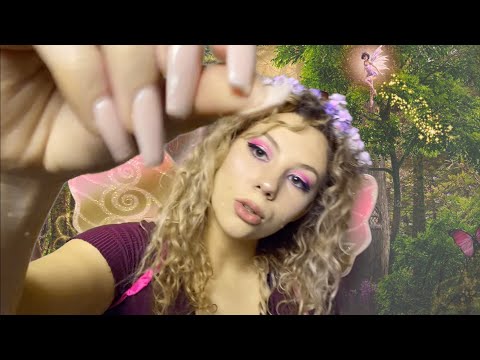Feminization Hypnosis roleplay - Gothic witch turns you into a girl
Feminization hypnosis collection https://www.etsy.com/shop/EdenParisBooks?section_id=22124197
Hypnosis is a state of human consciousness involving focused attention and reduced peripheral awareness and an enhanced capacity to respond to suggestion. The term may also refer to an art, skill, or act of inducing hypnosis.[1]
Theories explaining what occurs during hypnosis fall into two groups. Altered state theories see hypnosis as an altered state of mind or trance, marked by a level of awareness different from the ordinary conscious state.[2][3] In contrast, nonstate theories see hypnosis as a form of imaginative role enactment.[4][5][6]
During hypnosis, a person is said to have heightened focus and concentration. The person can concentrate intensely on a specific thought or memory, while blocking out sources of distraction.[7] Hypnotised subjects are said to show an increased response to suggestions.[8] Hypnosis is usually induced by a procedure known as a hypnotic induction involving a series of preliminary instructions and suggestion. The use of hypnotism for therapeutic purposes is referred to as "hypnotherapy", while its use as a form of entertainment for an audience is known as "stage hypnosis". Stage hypnosis is often performed by mentalists practicing the art form of mentalism.
A person in a state of hypnosis has focused attention, and has increased suggestibility.[11]
The hypnotized individual appears to heed only the communications of the hypnotist and typically responds in an uncritical, automatic fashion while ignoring all aspects of the environment other than those pointed out by the hypnotist. In a hypnotic state an individual tends to see, feel, smell, and otherwise perceive in accordance with the hypnotist's suggestions, even though these suggestions may be in apparent contradiction to the actual stimuli present in the environment. The effects of hypnosis are not limited to sensory change; even the subject's memory and awareness of self may be altered by suggestion, and the effects of the suggestions may be extended (posthypnotically) into the subject's subsequent waking activity.[12]
It could be said that hypnotic suggestion is explicitly intended to make use of the placebo effect. For example, in 1994, Irving Kirsch characterised hypnosis as a "nondeceptive placebo", i.e., a method that openly makes use of suggestion and employs methods to amplify its effects.[13][14]
In Trance on Trial, a 1989 text directed at the legal profession, legal scholar Alan W. Scheflin and psychologist Jerrold Lee Shapiro observed that the "deeper" the hypnotism, the more likely a particular characteristic is to appear, and the greater extent to which it is manifested. Scheflin and Shapiro identified 20 separate characteristics that hypnotized subjects might display:[15] "dissociation"; "detachment"; "suggestibility", "ideosensory activity";[16] "catalepsy"; "ideomotor responsiveness";[17] "age regression"; "revivification"; "hypermnesia"; "[automatic or suggested] amnesia"; "posthypnotic responses"; "hypnotic analgesia and anesthesia"; "glove anesthesia";[18] "somnambulism";[19] "automatic writing"; "time distortion"; "release of inhibitions"; "change in capacity for volitional activity"; "trance logic";[20] and "effortless imagination".
Última actualización:


![[ASMR] Vampire Turns You Into a Vampire(Feeds)(Vampire role-play)](https://i.theasmrindex.com/uploads/thumbs/v1sNfsYvc0M.jpg)






![[Furry ASMR] Deer Turns You Into His Toy (Hypnosis)](https://i.theasmrindex.com/uploads/thumbs/hFzht-70884.jpg)
![ASMR | Mad Doctor Turns You Into a Cat Girl [RECORDED LIVE]](https://i.theasmrindex.com/uploads/thumbs/_iQAE2yw2r4.jpg)



